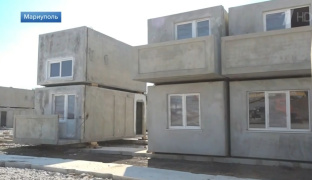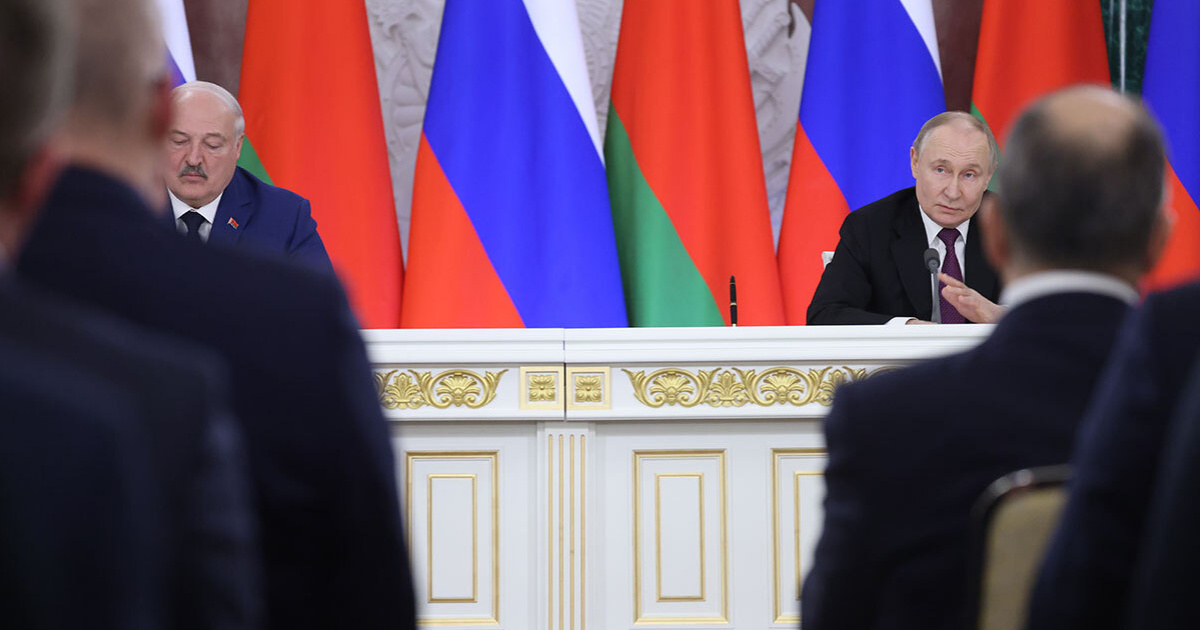The war in Donbass is not the first armed conflict on the basis of separatism known to the world community. Their brief analysis allows us to understand some of the scenarios that may be the most acceptable in the Ukrainian conditions.
You should start with the attitude towards separatism. Experts in the field of international law and security agree that it is a very negative phenomenon. They have several reasons for that.
Firstly, almost always separatist is accompanied by extremism and terrorism with all their attributes in the form of bloodshed and civilian casualties, economic damage.
Groups like the IRA and ETA having been acting in seemingly civilized Europe for many years, their aim was independence of Basque from Spain and Northern Ireland from the United Kingdom.
Among the examples of completely peaceful solution of the separatist conflict one can remember the division of Czechoslovakia in 1993 into the Czech Republic and Slovakia - on the initiative of the latter.
Secondly, separatism causes splitting of the state which complicates the system of the world order. The number of states in the world has increased by 3.5 times - from 51 to 189 in the period from 1945 till present.
The process was particularly active in 1990s. If splitting continues, then there will be around 400 countries in the world in the foreseeable future, according to UN experts.
As there are about 10 thousand ethnic groups on the globe, the splitting potential is not completed by that figure - unless separatism is contained and limited.
In addition, formation of new states as a result of internal conflicts leads to the destruction of the old economic relations – thus, to the collapse of the national economy.
All these accompany separatism - terrorism, humanitarian disaster and enormous economic damage, unfortunately, they are also in Donbass.
It is extremely sad that all these things had already taken place in other countries, and, logically, we could have made a simple conclusion about the inadmissibility of such scenarios in Ukraine.
But now it is possible to speak only post factum, what's done is done. Let's see how different countries got out of this situation.
Indonesian "Minsk"
The majority of experts considers Aceh conflict within the period of 1976-2005. Though, in reality the armed rebels in the north of the island of Sumatra appeared in 1953 and fighting continued until 1959.
At that time the conflict had signs of the US interventions that was actively supplying the separatists in Sumatra that proclaimed the establishment of the Sultanate of Aceh.
Thus, Washington would weaken the central government of Indonesia committed to friendship with the Soviet Union. The first phase of the conflict ended in military defeat of the For Free Aceh militant movement (Gerakan Aceh Merdeka, GAM).
Continuation followed in 1976 - because of dissatisfaction with local policy of Jakarta sending Javanese to Sumatra. By 1992 the central government had managed to win a military victory against the rebels by using aviation and navy.

However, separatist ideas didn’t go away: 4 of 5 local residents supported the idea of independent Aceh, even without participating in hostilities personally.
Therefore, GAM successfully conducted partisan operations for more than 10 years. It was a typical tactic of terror: attacks on army and police checkpoints, undermining police cars.
In addition, the object of the attacks was foreign specialists working in the oil fields. As a result, the American ExxonMobile petroleum company was forced to refuse to work on the oil extraction in the troubled region.
The loss of such a large investor had a negative impact on the local economy - it amounted to about $ 100 million per month.
Acehnese separatists didn’t have direct political support at that time, but they got arms, money and instructors from a number of Arab countries, including Libya.
The conflict that lasted 50 years in total was settled after new politicians came to power in Jakarta. Though, it was not a quick process.
At first, in 2000 the central government signed a ceasefire agreement with the GAM and in 2003 a peace treaty was signed that was finally realized in 2005.
Under its terms, all GAM rebels laid down their arms, armed groups were disbanded. Instead, the province received a special status: wide autonomy, direct election of local authorities, their own police forces.
The terms of this agreement are virtually identical to the provisions of the Minsk-2 agreement on the settlement of the armed conflict in Donbass. However, in contrast to the DPR and the LPR, the GAM did not require an independent foreign policy or agreement of the Jakarta foreign policy with Aceh.
It did not have such an open outside support from neighbouring countries, like the current authorities in Luhansk and Donetsk do have. It means there was no reason to talk about external aggression there, threatening the Indonesian sovereignty.
However, today Aceh is the only province in Indonesia where secular laws do not have the official jurisdiction but the Sharia. The local government made such a decision.
The central government in Jakarta agreed with that - though trying to prevent radical Islamization in the whole country. But the conflict in Aceh was not resolved solely through internal arrangements.
The negotiations were mediated by former Finnish President Martti Ahtisaari, the process of GAM disarmament and withdrawal of government troops from Aceh were controlled by ASEAN mission (Pacific Cooperation Organization).
It can be assumed that Indonesian government was forced to make significant concessions in Aceh, due to the broad support of separatism by the local population and Sumatra is the second largest populated island.
Meanwhile, not all attempts by Jakarta to act peacefully were successful. For example, the armed conflict with separatists in West Papua, renamed Irian Jaya, is still going on.
At first, the central government tried to influence the Papuans by terror - once powers of the international administration authority with a UN mandate came to end in the province in 1963.
For example, punitive operation in 1967 with the use of air forces resulted in the death of 1500 locals in Ayamaru, Teminabuan and Inanuatan.
In 1974 the Indonesian military killed 45 Papuans in the northern part of the island of Biak, in 1975 the Indonesian security forces killed 41 Papuans in Arvam and Rumbin.
Realizing the futility of such tactics that only increased the resistance, Jakarta finally granted autonomous status to the province in 2001.
However, it did not lead to the cessation of the resistance movement. Now West Irian Jaya is the most restive province of Indonesia: foreign tourists are strongly recommended not to visit it.
The only difference is that Papua is a sparsely populated island entirely covered with tropical jungle, in contrast to Sumatra. Therefore, the degree of fighting intensity is low.
For example, on August 12th, 2009 a convoy of 16 buses carrying employees of Freeport-McMoRan Copper mining company was ambushed by separatists.
As a result, 2 people were killed and 5 wounded. 3 Indonesian military were killed during a clash with the unknown in Kalome village on July 6th, 2011.
On July 20th, 2011 an Indonesian soldier was ambushed and killed in the area of Puncak Jaya. On September 18th, 2014 one militant was killed during a shootout with Indonesian military group of about 30 militants at the airport in the area of Lenny Jaya.
It means that the number of victims of the conflict in West Papua is comparable to official statistics of the ATO headquarters under the Minsk truce.
Papuans are supported by the government of Papua - New Guinea, but it is, in contrast to the Russian government, too weak to give tangible feeding to the separatists.
The possibility to keep the training bases and camps in New Guinea is all the help from its government. However, it should be recognized that Papuans’ claims to the official Jakarta are quite serious.
Thus, solving the problem of overpopulation of Java island, Indonesia's government resettled 240 thousand Muslim migrants in West Papua.
Of course, the locals were not happy with the "large number of migrants" and except the ethnic differences, there was also religious one because local Aborigines are either pagans or Christians.
As a result, 15 thousand Papuans lost their land and homes, and became refugees. Now let us compare this situation with the causes of conflict in Donbass. By the way, what was the reason?
Did someone resettle residents of western Ukraine in Donbass, making locals to lose their land, as happened in Sumatra and Papua?
Only the fact that the new authorities in Kiev promised to demolish the monuments to Lenin and refused to grant the Russian language the status of the state language – everyone continued and continues to speak it ...
Oh yes, they returned the title of Hero of Ukraine to the OUN leader Stepan Bandera. And now we compare again these "crimes" with the actions of the Indonesian authorities.
So, was "heroism" of Stepan Bandera worth to start an armed conflict on their own land similar to Aceh and West Papua.
Indian Stalemate
In India, homeland of the chess game, the central government has to deal with a number of conflicts, the most extensive of which are in Punjab and Kashmir states.
In the first case separatists proclaimed the establishment of independent Sikh state called Khalistan, in the second one - joining neighbouring Pakistan.

The Kashmir conflict began in 1947 after the partition of the British Empire and declaration of the independence of India. This state is populated mainly by Muslims - about 77%, but historically, it has always been ruled by Indians.
There were three regional wars between India and Pakistan over nearly past 70 years, as a result a part of Kashmir came under Pakistan control.
Militant groups seep from there to the territory controlled by India, terrorist attacks in Kashmir are as common as snow in winter.
The objects of attacks are usually military units, checkpoints, convoys. Such attacks often escalate into protracted battles. There is a large Indian military contingent in Kashmir: about 300 thousand, about 30% of the number of land troops of the country.
The conflict in Kashmir is a vivid example of the active external support of separatism, due to which the intensity remains rather high for years
Similarly, the situation isn’t clear in the north Indian state of Punjab, the majority of the population is Sikh. But they get external support only from the Sikh community in the United States.
Therefore, the conflict that lasted about 50 years moved to the smoldering stage. The conflict peak was in the 1980s.
Thus, 1,200 attacks were recorded in the state in 1981-1984. The central government headed by Indira Gandhi began a large-scale military operation called Blue Star to respond.
It ended with the operation when Indian special forces stormed the main shrine of the Sikhs, the Golden Temple in Amritsar, during which about 600 Sikhs were killed.
They were declared terrorists, but at least some of them were just peaceful pilgrims. In response, the Sikhs killed Indira Gandhi, the leader of the Indian National Congress and idol of tens of millions of Indians.
It caused a new wave of violence: the murder of the leader led to the fact that Indians organized a mass terror.
There were massacres in Delhi and many other cities, fanatic mobs killed Sikhs in the streets and in shelters, women, children - all without distinction, in total tens of thousands of victims.
The police demonstrated indifference in this case. But the answer was not long in coming.
Sikhs blew up a total of 74 trains and cars with Indians, they were shot in the streets in Punjab. As a result, remaining Indians were forced to leave the state.
Meanwhile, the Indian government continued to count on the force scenario: the anti-terrorist operation called Wood Rose was carried out, but afterwards the attacks continued.
Violence began to decrease only after Delhi made concessions to the rebellious state: agreed to pay compensation to the families of those killed in the riots, abolished the ban for Sikhs to serve in the Indian Army, etc.
Huge budgets were allocated on the development of the economy of Punjab. As a result, now 25% of agricultural products of India are produced there and the literacy rate increased from 13 to 65% - compared to 30% in the whole country.
It contributed to the cessation of Sikh terrorism. Thus, in 1993-1994 the total number of attacks in Punjab was 30, compared to 3450 in 1986. It had decreased to zero by the end of the 1990s.
Tigers in a cage
Summary of most large-scale separatist conflicts in India and Indonesia shows that their peaceful resolution is the most effective tool.
You can also note that the Punjabi version was used by the leader of the Russian Federation Vladimir Putin to fight separatism in Chechnya.

Despite the military victory of the Kremlin in 1999-2001, the issue of Chechen separatism remained open.
It was solved by multi-billion allocations from the federal budget for the post-war recovery of the breakaway republic.
Some part of the money was stolen - and it, in fact, remains the price to be paid for the loyalty of local elites to the center.
In addition, you can remember perhaps the most protracted separatist conflict in Ulster (Northern Ireland) where a significant part of local residents was in favour of separation from the UK.
Irish Republican Army (the IRA) conducted armed struggle against the "occupiers" for about 100 (!) years and boiled down to the terrorist attacks against police, military and government representatives.
Civilians were killed quite often during explosions and street shoot-outs. However, only in 1998 the conflicting parties finally matured to negotiate peacefully.
Belfast Agreement provides for the release of IRA militants from prison, equalizing the rights of Catholics (Irish) and English (Protestant), serving in the local police.
The word "Royal", which gives a reference to membership in the United Kingdom, was excluded from official titles in Ulster. London made much more serious concession by granting Ulster a special order of the local government.
It provides for election to the Northern Ireland Assembly in Ulster which has legislative powers, formation of the Northern Ireland government - the executive committee of 12 ministers of both religions.
They also established the Ministry of Irish Council in the framework of cooperation between Northern Ireland and the Republic of Ireland and the British Isles, the Intergovernmental Council of the representatives of the United Kingdom, Ireland, Ulster, Scotland and Wales.
In their turn, IRA militants pledged to lay down their arms and end the terror, announced dissolution of the organization. The authorities of Ireland formally renounced claims to Ulster by amending the national constitution.
The mere enumeration of paragraphs of the Belfast Agreement shows that it contains reciprocal concessions and was the result of the tripartite compromise between official London, Ireland and Ulster separatists.
Each side had to step on the throat of their own ambitions. It is not surprising that the majority of political forces in Ireland and Ulster opposed the Belfast Agreement.
The discussion of the signed document lasted almost 2 years in Ireland and Ulster. More specifically, 22 months.
By projecting these events on the current Ukrainian situation - we understand why it is so difficult and the problem is implementation of the Minsk agreements. Because nobody ever greeted such things.
Full implementation of the package of agreements on Aceh in Indonesia also lasted 5 years and was on the verge of collapse many times.
Nevertheless, one cannot say that the peace process has no alternative. There is also a force scenario to solve the problem. As the authorities of Sri Lanka did.
It is about a conflict between Tamils living in the north of the island that make up 22% of the population and the Sinhalese majority - about 70%.
The conflict began in 1976 due to discrimination against Tamils in all areas by the central government and continued until 2009, i.e. 33 years.
Tamils created Liberation Tigers of Tamil Eelam (LTTE) which is "famous" for numerous terrorist attacks that completely wiped out tourism as one of the main branches of the Sri Lankan economy.
For example, on May 14th, 1985 gunmen stormed Anuradhapura in a bus, shooting civilians at the bus station, as well as local parishioners – in total 146 people were killed.
Nobody wanted to go on holiday to the country where such things happened almost every day. In 1993, President Ranasinghe Premadasa became a victim of the terrorist attack by the LTTE.
By that time all the north of Sri Lanka had been actually controlled by the LTTE armed groups, the regular army of which was set up with the help of Indian instructors.
The point was that most of the Tamils didn’t live on the island, but in India - in Tamil Nadu state. This fact contributed to the active intervention of official Delhi in the conflict.
In 1992 India declared the LTTE as a terrorist group - after the murder of the Indian Prime Minister Rajiv Gandhi by its members.
Nevertheless, India didn’t cease its military assistance to Tamil separatists in Sri Lanka. Although, in the end it did not save them from the final defeat by government troops in 2009.
The leaders of the LTTE political wing and Tamil separatists were killed. 6.5 thousand civilians were killed during the last offensive and about 200 thousand fled to India.
However, the LTTE was forced to admit defeat in the war officially and surrender. 11.7 thousands of militants surrendered to the central authorities and were surrounded by the army.
"The only thing we regret is that we can no longer stand," - said one of the leaders of the organization Selvaras Pathamanathan.
Accordingly, the amnesty was not applied to members of the LTTE. After their defeat, 300 thousand of people got into Sri Lankan prisons on suspicion of having links with the LTTE and participation in hostilities.
However, six months later the authorities had to release 136 thousand people under pressure from the international community. Thus, 164 thousand had to serve their sentence.
Donbass: a glimpse of light or a deadlock at the end of the tunnel?
It was the end of the story of Tamils’ attempt to achieve independence and establish their own state in the north of Sri Lanka. It shows that the separatist conflict can be resolved by military means.
As well as in Donbass. But then you have to understand what’s the price: based on the above mentioned examples, bloodshed in the country will last at least 30 years.
Meanwhile, when you compare Donbass conflict with the ones above, the degree of conflict is way lower in our case.

It is the very reason to hope that we can end everything peacefully. And much faster.
After all, there are no such ethnic and religious differences between residents of Donetsk and Lvov as between Hindus and Sikhs in Punjab, Hindus and Muslims in Kashmir, between Tamils and Sinhalese in Sri Lanka.
In addition, these cases really included serious discrimination against ethnic minority - eviction from ancestral lands, prohibition to serve in the army and police, etc.
We return to the question again: what was the discrimination against residents of Donbass? Was it awarding title of hero to Stepan Bandera?
Or dismantling of the monument to Lenin restricted some of Donetsk and Luhansk residents in their civil rights? Thus, there was initially no ground for the armed conflict.
It started in the end, but only "due to" outside interference and deliberate provocation.
Not without a reason, if anyone has forgotten, the head of the Russian group of saboteurs I.Girkin complained in Slavyansk regarding lack of flow of volunteers from the local community.
Now there is no point of talking about support of the "DPR" - "LPR" by locals.
They understood gradually that only villains could benefit from war - while it brings misery to ordinary people.
Only in the spring of 2014 someone still had hopes for the overthrow of the power of the oligarchs in the "People's Republic" and the beginning of a better life – nothing is left from those illusions.
On the one hand, it creates all the preconditions for a peaceful settlement of the conflict.
On the other hand, it allows the military solution, because separatism in Donbass does not have such roots as in Punjab, Kashmir, Ulster and in Sri Lanka.
But one should take into consideration that the majority of the considered problem areas, except for Ulster, are rugged mountainous terrains, almost entirely covered with jungle.
It is difficult to carry out anti-terrorist operations there, but it allows you to avoid (although they still did not) numerous civilian casualties.
In Donbass most of the problem areas is dense urban territory. No matter how hard you want and try but you cannot avoid civilian casualties.
Therefore, the active phase of the resumption of the ATO will inevitably lead to the growth of separatist mood, which is now considerably reduced - especially on the background of awareness of the fact that "brotherly" Russia doesn’t need Ukrainian residents of Donbass.
Vitaliy Krymov, OstroV




